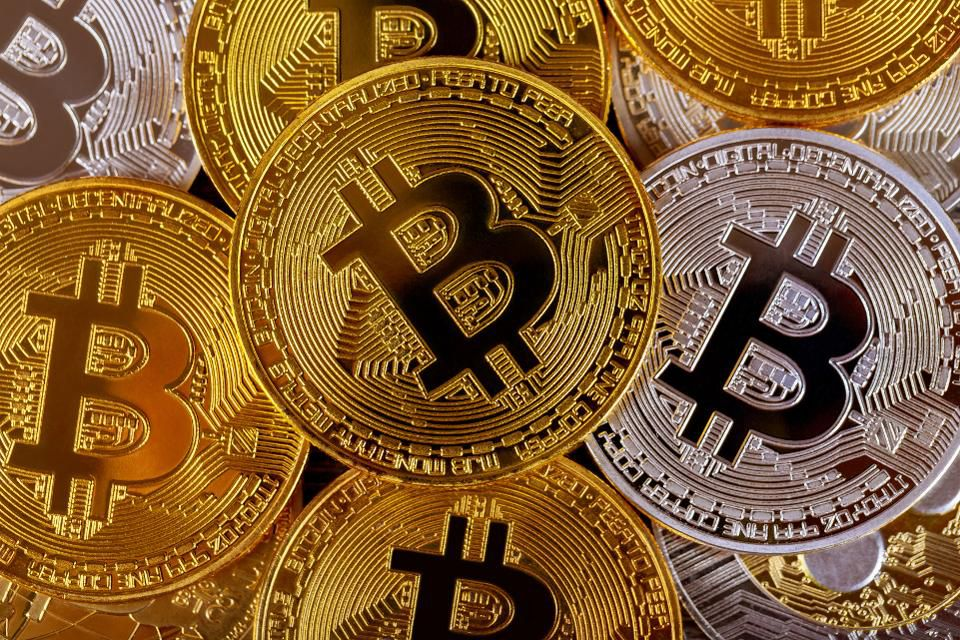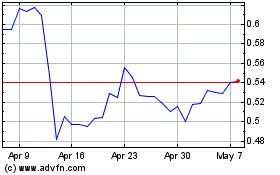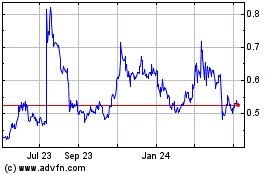
Introduction
Crypto-assets have drawn much attention of late. From
https://www.forbes.com/sites/rhockett/2017/12/17/betting-on-beta-coin/#20a9cc364670"
href="https://www.forbes.com/sites/rhockett/2017/12/17/betting-on-beta-coin/#20a9cc364670"
target="_self">Bitcoin’s market volatility through
https://cointelegraph.com/news/coinbase-reportedly-secures-20-billion-hedge-fund-through-its-prime-brokerage-services"
href="https://cointelegraph.com/news/coinbase-reportedly-secures-20-billion-hedge-fund-through-its-prime-brokerage-services"
rel="nofollow noopener noreferrer" target="_blank">regulator
puzzlement over how best to regulate Bitcoin’s cousins, stories in
the financial press seem as often as not to concern digital
currencies, blockchain technology, or any of a bewildering array of
newish topics now routinely lumped together under the barbarous
rubric of
‘https://ftalphaville.ft.com/2017/08/18/2192493/the-finance-franchise-and-fintech-part-2/"
href="https://ftalphaville.ft.com/2017/08/18/2192493/the-finance-franchise-and-fintech-part-2/"
rel="nofollow noopener noreferrer" target="_blank">fintech.’
Against this backdrop one hears
https://www.businessinsider.com/hedge-funds-being-lured-by-coinbase"
href="https://www.businessinsider.com/hedge-funds-being-lured-by-coinbase"
rel="nofollow noopener noreferrer" target="_blank">countless
dark and countless sunny augurs. Some claim that crypto-monies will
supplant ‘fiat’ money, thereby liberating us all from both
government oppression and central bank ‘debasement’ of currencies.
Others warn blockchain will aggravate crime and yet-further shade
shadow-markets, which we’ll lose all capacity to regulate. And
still others look forward to privacy utopias and revived
https://www.forbes.com/sites/katiegilbert/2014/09/22/why-local-currencies-could-be-on-the-rise-in-the-u-s-and-why-it-matters/#4f627dc44e95"
href="https://www.forbes.com/sites/katiegilbert/2014/09/22/why-local-currencies-could-be-on-the-rise-in-the-u-s-and-why-it-matters/#4f627dc44e95"
target="_self">local ‘circulation economies.’
Many a layperson who’s lacking in info-tech education might
wonder now just what to make of these claims. Must one be a
programmer or cryptographer before s/he can weigh-in on such heady
matters?
I think the answer where most fintech’s concerned is a ‘probably
not.’ Where crypto-currency’s the subject,
however, I’m sure that the answer is no. For as
it happens, we have been here before.
The story of America’s money is a preview of the story we’ll
soon see unfold for crypto-money. Our money’s past is, in short,
our cryptos’ future.
Dollar bills are remarkable things. They’re the same all over
the United States. Take out money from a bank branch or an ATM
anywhere and you’ll get the same thing for your trouble: a
combination of green one dollar, five dollar, ten dollar, twenty
dollar or perhaps hundred dollar notes. They’ll all look the same,
and they all will be worth the same when their denominations are
the same.
That is what sovereign-issued currency looks like, even when
paid out by nominally ‘private’ banks. Because they all deal in
national currencies, banks are not really as private as you might
think. They are licensed by us, the sovereign public, to deal in
our money –
http://dollarsandsense.org/archives/2018/0318hockett.html"
href="http://dollarsandsense.org/archives/2018/0318hockett.html"
rel="nofollow noopener noreferrer" target="_blank">our Federal
Reserve Notes, as our money bills call themselves.
https://papers.ssrn.com/sol3/papers.cfm?abstract_id=2820176"
href="https://papers.ssrn.com/sol3/papers.cfm?abstract_id=2820176"
rel="nofollow noopener noreferrer" target="_blank">In effect,
banks are franchisees, while we the sovereign public are the
franchisor and our national money is the franchised good.
You can think of the uniform value and appearance of our
currency as being a bit like those golden arches you see all around
if you like: They serve to let everyone know that the item’s the
same irrespective of just where you are in our nation – New York,
California; Florida, Alaska ... They are always and everywhere the
same.
And if a bank abuses the brand by, say, issuing bad loans or
over-levering itself, it will risk losing its charter much as a
restaurateur who sells spoiled food risks being booted from the
franchise. That’s how franchises work. They are ‘quality control’
pacts, with the franchisees abiding by the terms and the franchisor
administering the terms. Where our money’s concerned,
https://papers.ssrn.com/sol3/papers.cfm?abstract_id=2820176"
href="https://papers.ssrn.com/sol3/papers.cfm?abstract_id=2820176"
rel="nofollow noopener noreferrer" target="_blank">we are the
franchisor.
You might be tempted to think things have always been thus.
Didn’t the U.S. make the dollar its money right from the start?
The answer is, ‘yes and no.’ The key feature of the dollar in
the early days of our republic – until 1863 – is that it was then a
mere unit of account, not a currency. Sure, the Mint minted coins,
but paper money – ‘notes’ – were issued by private banking
institutions. Hence the term
‘http://dollarsandsense.org/archives/2018/0318hockett.html"
href="http://dollarsandsense.org/archives/2018/0318hockett.html"
rel="nofollow noopener noreferrer" target="_blank">bank notes’
for paper currencies that circulated in the 19th
century. America’s paper money supply was a plethora of privately
issued ‘bank notes.’
Bank notes were denominated in dollar increments, but were not
sovereign-issued liabilities. The banks were their own franchisors
and franchisees alike, and their notes were their own liabilities -
liabilities of their private issuers. Different issuers, for their
part, were differently reliable. Two banks might both promise
redeemability of their notes into the same quantum of something
more solid – gold, for example – but might well be differently able
to live up to their promises.
These differences among banks’ reliability stemmed from a
variety of factors. One was that bank regulation was more
technologically difficult in the 19th century, meaning
that regulators could be only so effective at exercising ‘quality
control’ over paper currency issuers. Another was that all banks
were chartered and regulated by states rather than by our federal
government, meaning that differing state competencies at regulating
could bring differing values to currencies issued in different
states.
The upshot of this ‘https://www.youtube.com/watch?v=qdR4ujneQzo"
href="https://www.youtube.com/watch?v=qdR4ujneQzo" rel="nofollow
noopener noreferrer" target="_blank">Banking Babel,’ as I call
it, is that the nation’s currency supply consisted in thousands of
distinct bank notes all trading at various discounts to stated par.
A dollar note issued by Billy the Kid Bank or Sidewinder Bank might
trade at 50% of par, for example, amounting to no more than ‘four
bits,’ not a dollar. A dollar note issued by Wyatt Erp Bank or Bald
Eagle Bank might, by contrast, go for 90% of par, or even full
par.
Making things worse, these currencies constantly fluctuated in
value, both in relation to the goods and services they could
command and in relation to one another.
‘How much money’ you had in your pocket thus varied with whose
notes you carried and when, even though all were denominated as
dollars. Shopkeepers in consequence had to maintain regularly
updated discount schedules behind their counters, instructing
clerks how much to discount separate banks’ notes in determining
‘how much’ (of what) to charge buyers for goods.
If you carried multiple banks’ notes in your pockets, making
purchases at the general store could take you – and the store clerk
– much longer than we’re used to now. Imagine what queues would
form at the ‘checkout lines’ if we did that now…
Scarce wonder that this period of U.S. banking history is called
the ‘https://www.youtube.com/watch?v=qdR4ujneQzo"
href="https://www.youtube.com/watch?v=qdR4ujneQzo" rel="nofollow
noopener noreferrer" target="_blank">wildcat banking’ era.
(Those who think this was a good idea call it the ‘free banking’
era. It was free alright – it was pretty much value-free.)
Needless to say, private banknote money didn’t make for an
optimal payments system. It was good that the nation had a unit
of account – the dollar – but unfortunately it still lacked an
actual currency.
This all changed in 1863. By that point the nation was embroiled
in civil war. The Civil War threw up two factors that made a
uniform national currency possible. The first factor was that the
stresses of war made a single and stable currency more clearly
necessary than ever before. To prosecute the war the federal
government had to be able to spend its own currency anywhere in the
union where government operations were necessary. The second factor
was that the southern slave states, which had always been the
principal objectors to national monetary uniformity, were
conveniently unrepresented in Congress during the war years – they
were trying to secede, after all.
The upshot was that Congress passed the
https://www.encyclopedia.com/history/encyclopedias-almanacs-transcripts-and-maps/national-bank-act-1863"
href="https://www.encyclopedia.com/history/encyclopedias-almanacs-transcripts-and-maps/national-bank-act-1863"
rel="nofollow noopener noreferrer" target="_blank">National Bank
Act, signed into law by President Lincoln in 1863. The Act
established, for the first time in our nation’s history, a system
of federally chartered ‘National Banks,’ located all over the
nation, all issuing the very same currency. The latter was named,
tellingly, the ‘Greenback.’ Sound familiar?
The National Bank Act (‘NBA’) transformed our interlinked
banking, financial, and monetary systems. In very short order there
were federally chartered banks in every state of the Union, all of
them subject to uniform regulatory standards and all of them
issuing, accordingly, a uniform currency with a uniform value.
These banks could also sell U.S. Treasury securities, making of
them a system of outlets for issuance of both of our federal
government’s principal circulating liabilities – Greenbacks and
T-Bills. In no time at all, ‘wildcat’ banknotes left circulation,
with Greenbacks and T-bills – our two sovereign financial
instruments – the proverbial ‘only game in town.’
The administrator of this national bank system was called,
tellingly, the https://www.occ.treas.gov/"
href="https://www.occ.treas.gov/" rel="nofollow noopener
noreferrer" target="_blank">Office of the Comptroller of the
Currency, or ‘OCC.’ The name is telling because ‘comptroller’ is
merely archaic English for ‘controller.’ The OCC, housed in
Treasury, was the ‘controller’ – the administrator – of our first
truly national currency system. That, and only that, was why the
OCC was founded as the nation’s first federal bank regulator.
The OCC remains to this day one of our principal federal bank
regulators. It is the chartering authority for national banks,
administers those banks’ portfolio-regulatory and other regimes,
and has final word on whether a national bank has gone bankrupt. It
has rather less to do with the national currency, however, than it
had for its first fifty years.
That is because, by 1913, we as a nation had come to realize
that a healthy economy needed more than a uniform
currency. It also needed what is known in the discipline
as an elastic currency.
An elastic currency is a currency whose supply can be adjusted
to accommodate, while not over-accommodating, transaction
demand. The idea is to maintain just enough money supply to
accommodate desired transaction volumes, so as not needlessly to
squelch desired transacting, while at the same time preventing
over-issuance of the sort that can spark inflation – the classic
problem of ‘too much money’ chasing ‘too few goods.’
The OCC and Treasury more generally were not well equipped,
operationally or transaction-technologically speaking, to engage in
what I elsewhere call the daily ‘money-modulatory’ task that an
elastic currency requires. Central banks of the kind found all over
the ‘developed’ world circa 1913, by contrast, were well suited to
the task. The U.S. accordingly established its version of a central
bank, patterned partly on European models and partly on private
clearinghouse arrangements among banks, with the Federal Reserve
Act of 1913.
The https://www.federalreserve.gov/aboutthefed/fract.htm"
href="https://www.federalreserve.gov/aboutthefed/fract.htm"
rel="nofollow noopener noreferrer" target="_blank">Federal
Reserve Act (‘FRA’) established the Fed that we all know today, and
transferred administration of the national money supply from the
Comptroller to this new entity. This is why the ‘Greenbacks’ you
now find in your pocket call themselves, not ‘Treasury Notes,’ but
‘Federal Reserve Notes.’ So we now use ‘bank notes’ as currency
just as we did in the 19th century. It’s just that
they’re public bank notes – ‘central’ bank notes – rather
than private bank notes. They are Citizen Notes,
you might say.
Now, what has this to do with crypto?, you might be asking.
Well, think about it for a moment …
The Stages Go Digital
Let’s call the pre-NBA ‘wildcat banking’ era of wildly
fluctuating private currencies ‘Stage 1’ of American monetary
history. Let’s call the post-NBA, pre-FRA period of uniform but
imperfectly elastic national currency ‘Stage 2’ of American
monetary history. And let’s call the post-FRA period we’ve
inhabited over the past century ‘Stage 3’ of American monetary
history. Where might we situate digital currency development along
this phased sequence?
I think it’s perfectly obvious that we’re at Stage 1 where
digital currency’s concerned. We’re amidst, that’s to say, digital
currrency’s ‘wildcat’ era. For one thing, there are many such
currencies – indeed, a bewildering and seemingly all-the-time
growing array of them. For another thing, they are all of them
issued by private issuers, some of which seem to be more or less
reputable, others of which seem to be … well, not so much. And
finally, thanks to the factors just mentioned, these currencies
fluctuate wildly in value, both relative to what they can purchase
and relative to one another.
They’re essentially https://www.youtube.com/watch?v=qdR4ujneQzo"
href="https://www.youtube.com/watch?v=qdR4ujneQzo" rel="nofollow
noopener noreferrer" target="_blank">digital wildcat
banknotes.
This is of course not a sustainable future for crypto. Nothing
whose value is so wildly unstable can function for long as a
‘money.’ Something must change, then, before digital currency can
expect a future.
What, then, might change? What might a ‘digital Stage 2,’ then
‘digital Stage 3’ look like? It seems to me that here, too, the
future is obvious.
Note first that, unlike during the late 19th and
early 20th centuries, there is no reason that what I’ve
called ‘Stage 2’ and ‘Stage 3’ can’t be reached simultaneously. The
reason is that our nation came to see the necessity of a stable
currency before it came to see the necessity of an elastic
currency, and accordingly instituted those things pursuant to the
same ‘stage chronology’ of its own learning. Now, however, we’re
well familiar with both those necessities, and can accordingly move
to uniformity and elasticity in the digital currency space
simultaneously.
Next, note that the Fed, like other central banks worldwide, is
now looking to upgrade the national payments architecture, which it
administers. https://en.wikipedia.org/wiki/Distributed_ledger"
href="https://en.wikipedia.org/wiki/Distributed_ledger"
rel="nofollow noopener noreferrer" target="_blank">Distributed
ledger technology (‘DLT’), which forms the backbone of the
better-known digital currencies, looks to be particularly promising
where such upgrading is concerned. Within the next several years, I
am wagering, payments systems worldwide will be built on
distributed ledgers. The U.S. will be late as we always are where
payments technology is concerned, but we’ll still soon be
there.
When we do, what do you suppose happens? Easy: The dollar
will go digital. The Fed will issue ‘Federal Reserve “Coins”’
and their keystroke equivalents much as it issues ‘Federal Reserve
“Notes”’ and their keystroke equivalents now. In this new world,
there will be little more use for what I’ll call ‘Wildcat Crypto’
than there was for ‘Wildcat Currency’ after the National Bank Act
of 1863. These ‘assets’ will simply fade out, retained only as
means of illicitly transacting in criminal activities until
caught.
This is true even of the
‘https://cointelegraph.com/news/report-stablecoins-see-significant-growth-in-adoption-over-recent-months"
href="https://cointelegraph.com/news/report-stablecoins-see-significant-growth-in-adoption-over-recent-months"
rel="nofollow noopener noreferrer" target="_blank">stablecoin’
products that have developed in recent months with a view to
addressing the wild fluctuations problem. Most of these peg to the
dollar. What need of that when the dollar itself soon goes
digital?
The Digital Dollar and a Citizens’
Fed
A Fed-issued and -administered digital dollar will be every bit
as uniform and elastic as the Fed-issued and administered
pre-digital dollar has been. Indeed it will likely be even more
easily managed thanks to the superior tracking ability afforded by
DLT. It will also, I predict, be something more: Because of the
speed, reliability, and tractability of distributed-ledger-tracked
credits and debits, a Fed-administered payment ledger will render
quite feasible something that would have been difficult until
recently: what I elsewhere call ‘Citizen Central Banking.’
That’s right, we shall soon be able to ‘cut out the banks’ as
proverbial ‘middlemen’ between our citizens and their central bank.
All citizens will be able to maintain what I call ‘Citizen
Accounts’ with the Fed. Not only will all citizens be ‘banked’ –
https://papers.ssrn.com/sol3/papers.cfm?abstract_id=2435534"
href="https://papers.ssrn.com/sol3/papers.cfm?abstract_id=2435534"
rel="nofollow noopener noreferrer" target="_blank">no one
‘unbanked’ – in these circumstances, but the Fed will then have
more potent monetary policy instruments at its disposal as
well.
In the midst of recession or liquidity trap, for example, our
central bank will no longer need supply cheap money to private
banks and then hope they’ll lend it to ordinary citizens so’s to
prime the consumer spending pump. Instead it can credit our Citizen
Accounts directly. The
‘https://papers.ssrn.com/sol3/papers.cfm?abstract_id=1987139"
href="https://papers.ssrn.com/sol3/papers.cfm?abstract_id=1987139"
rel="nofollow noopener noreferrer" target="_blank">pushing on a
string problem’ that so plagued the Fed’s QE strategies in 2009-12
will be much diminished. By the same token, when spending appears
to be ‘overheating’ and inflationary pressures loom, the Fed can
simply offer or raise interest payments on Citizen Accounts.
Direct central banking, in short, is apt to be far more
effective even than indirect central banking has been. And the new
digital dollar – still Fed-issued, still Fed-administered – will
make that more feasible than it’s ever been.
Conclusion
There is of course much more to say about all of this, which I
do in more scholarly as well as technical policy-pushing and
program-designing work. But for present purposes the point should
be clear. Money’s past is always and everywhere money’s prologue.
All that changes is the technical base upon which our money systems
are founded.
Insofar as the state of the art now is DLT, money itself will be
DLT. But it still will be stable, and still will be elastic, if it
is money. And that means it still will be sovereign – it will be
‘our’ money.
So long, then, Bitcoin, and so long, Etherium. And welcome to
America, new Digital Dollar.
Source: Forbes
Robert Hockett Contributor
Ripple (COIN:XRPUSD)
Historical Stock Chart
From Mar 2024 to Apr 2024

Ripple (COIN:XRPUSD)
Historical Stock Chart
From Apr 2023 to Apr 2024
